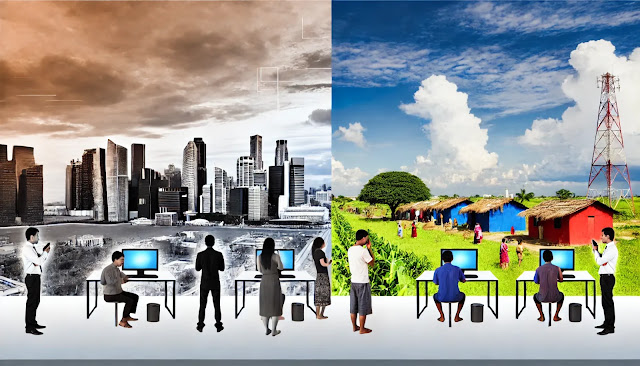Digital Divide and Addressing the Inequality of Information Access
In today's society, we rely heavily on digital environments. From work to education, information gathering, social networking, and shopping, most everyday activities are facilitated by digital technology. However, this dependency also reinforces divides in access to information, known as the "digital divide." The digital divide extends beyond technology access; it deepens social inequality. Older adults, rural communities, and low-income individuals often find themselves increasingly marginalized in this rapidly evolving digital landscape, which raises critical questions about how to address the resulting information inequality.
1. What is the Digital Divide?
The digital divide refers to the gap in access to information and communication technology (ICT), including access to the internet, computers, smartphones, and other digital devices. This divide is influenced by factors like income, education level, age, and geographic location, leading to significant disparities in accessing vital information. For instance, older adults or low-income individuals may struggle with technology costs, and those in rural areas often face unreliable internet, which limits their ability to access critical resources.
2. The Blind Spots in Information Access and Their Impact
The digital divide doesn't just stop at access to technology; it exacerbates social inequality. Groups with access to information tend to have higher economic and educational opportunities, while those without access miss out on these chances. In rural or remote areas, for instance, individuals often struggle to access essential services, medical information, or educational resources, negatively affecting their quality of life and economic prospects. This lack of access has far-reaching implications, reinforcing social isolation and widening economic disparities.
3. Efforts to Close the Digital Divide
Governments and nonprofit organizations worldwide are actively working to bridge the digital divide. Many initiatives provide broadband internet to underserved areas, digital device access to low-income households, and digital literacy training for older adults. For example, in some communities, free digital literacy programs teach older adults how to use smartphones and navigate the internet, while local public institutions offer device lending services to enhance accessibility. Such programs not only provide access but also help individuals gain confidence in using digital tools.
4. How MEMETOON Contributes to Addressing the Digital Divide
MEMETOON plays a valuable role in raising awareness about the digital divide and promoting solutions. As an accessible and engaging medium, webtoons are ideal for spreading awareness to a broad audience about the realities faced by marginalized communities. A MEMETOON series on the digital divide could feature characters who experience the challenges of limited information access and highlight the solutions they find along the way. Such stories allow readers to understand the significance of digital accessibility and empathize with those impacted by this divide. Through MEMETOON, these messages extend beyond entertainment to foster social consciousness and inspire action.
5. Global Examples of Bridging the Digital Divide
Globally, various programs have successfully worked to close the digital divide. For example, the U.S.-based nonprofit Digital Bridge provides free computers and internet literacy programs for low-income families. In Finland, citizens are legally entitled to access high-speed internet, promoting digital accessibility at the national level. Additionally, the European Union’s Digital Education Action Plan seeks to strengthen digital skills across all age groups. These examples offer valuable insights into how South Korea and other countries might advance their own digital accessibility initiatives.
6. The Future and Importance of Closing the Digital Divide
Closing the digital divide is not just about improving information access; it plays a fundamental role in promoting inclusivity and equality across society. As technology continues to advance, digital access and literacy will increasingly impact individuals’ lives. An active commitment to bridging the digital divide will enable more equitable access to information and ensure that all people benefit from digital advancements.
Through MEMETOON, these realities can be brought to life in webtoon stories that showcase the importance of digital access and the ways marginalized individuals face and overcome these challenges. Such storytelling enables MEMETOON to serve as an influential platform for raising awareness and promoting change.






Comments
Post a Comment